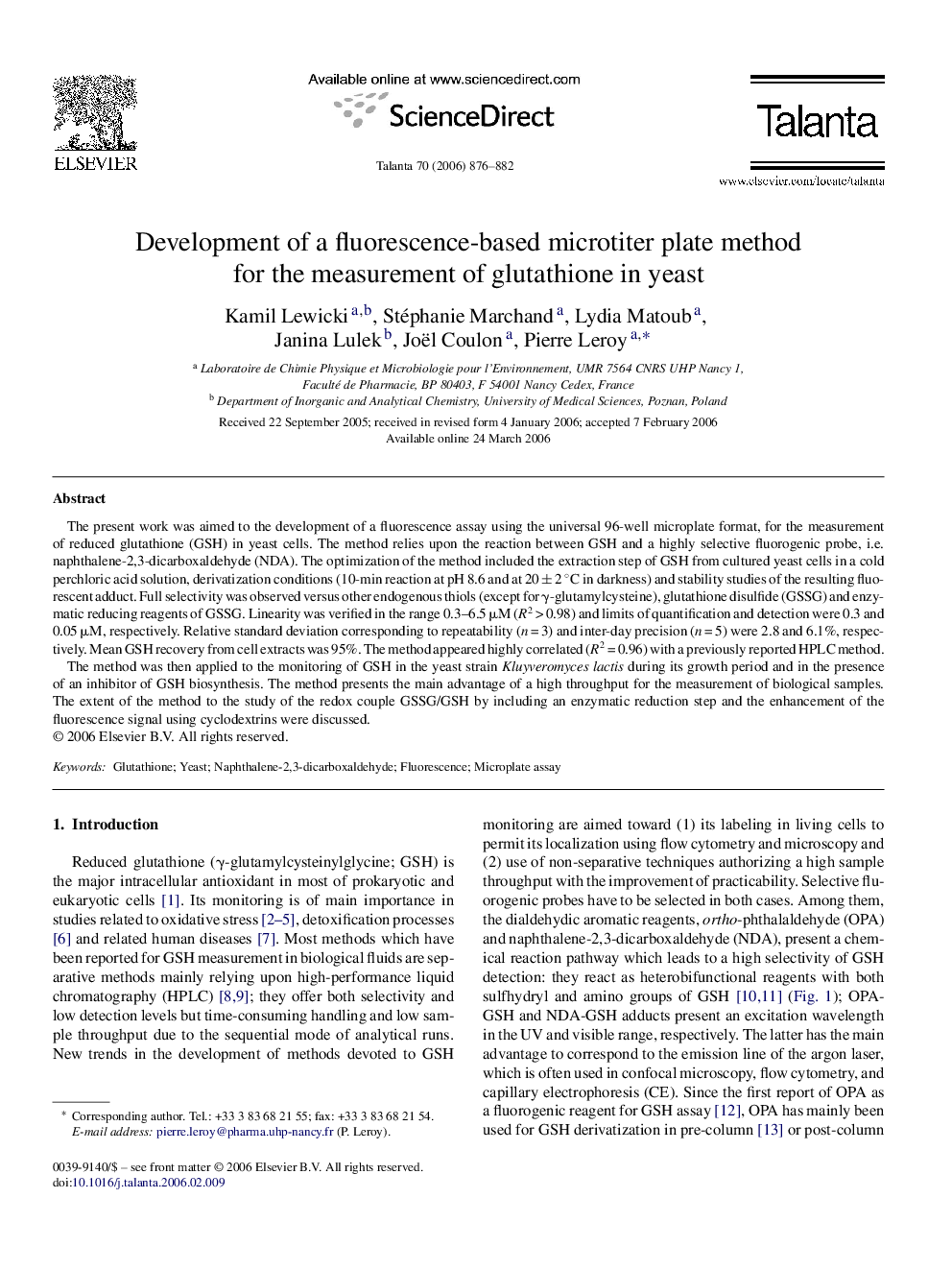| Article ID | Journal | Published Year | Pages | File Type |
|---|---|---|---|---|
| 1246311 | Talanta | 2006 | 7 Pages |
The present work was aimed to the development of a fluorescence assay using the universal 96-well microplate format, for the measurement of reduced glutathione (GSH) in yeast cells. The method relies upon the reaction between GSH and a highly selective fluorogenic probe, i.e. naphthalene-2,3-dicarboxaldehyde (NDA). The optimization of the method included the extraction step of GSH from cultured yeast cells in a cold perchloric acid solution, derivatization conditions (10-min reaction at pH 8.6 and at 20 ± 2 °C in darkness) and stability studies of the resulting fluorescent adduct. Full selectivity was observed versus other endogenous thiols (except for γ-glutamylcysteine), glutathione disulfide (GSSG) and enzymatic reducing reagents of GSSG. Linearity was verified in the range 0.3–6.5 μM (R2 > 0.98) and limits of quantification and detection were 0.3 and 0.05 μM, respectively. Relative standard deviation corresponding to repeatability (n = 3) and inter-day precision (n = 5) were 2.8 and 6.1%, respectively. Mean GSH recovery from cell extracts was 95%. The method appeared highly correlated (R2 = 0.96) with a previously reported HPLC method.The method was then applied to the monitoring of GSH in the yeast strain Kluyveromyces lactis during its growth period and in the presence of an inhibitor of GSH biosynthesis. The method presents the main advantage of a high throughput for the measurement of biological samples. The extent of the method to the study of the redox couple GSSG/GSH by including an enzymatic reduction step and the enhancement of the fluorescence signal using cyclodextrins were discussed.
